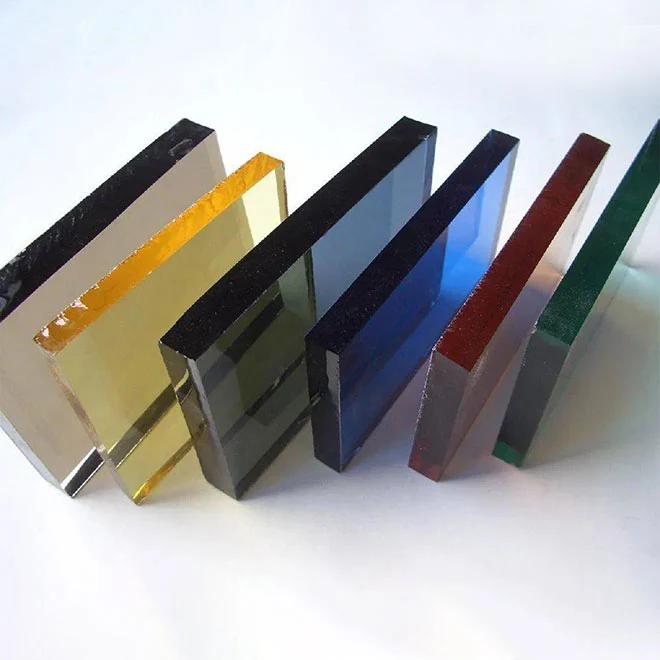What Are the Benefits of Using Reflective Glass Panels in Modern Architecture?
2024-10-26
Introduction: The Rise of Reflective Glass Panels
Reflective glass panels have become a popular choice in modern architecture, offering both aesthetic appeal and functional advantages. As cities evolve and architects strive for innovative designs, these panels are changing the way we think about building exteriors. But what exactly are the benefits of using reflective glass panels in contemporary architectural projects?
Understanding Reflective Glass Panels
Reflective glass panels are designed with a metallic coating that reflects light while allowing visibility from the inside. This unique characteristic makes them ideal for various applications, from residential homes to commercial skyscrapers.
1. Energy Efficiency
One of the standout benefits of reflective glass panels is their ability to improve energy efficiency. By reflecting a significant portion of solar radiation, these panels help maintain a comfortable indoor temperature. This means less reliance on air conditioning during hot months, leading to lower energy bills and a reduced carbon footprint.
2. Glare Reduction
Reflective glass panels minimize glare, making indoor spaces more comfortable and visually appealing. This is particularly important for offices and workspaces, where excessive glare can disrupt productivity and strain the eyes. By controlling light entry, reflective glass contributes to a more pleasant environment.
3. Enhanced Privacy
Privacy is a crucial consideration in both residential and commercial architecture. Reflective glass panels provide an effective barrier, allowing occupants to enjoy natural light without compromising their privacy. From high-rise buildings to homes in busy neighborhoods, these panels create a sense of security without sacrificing openness.
4. Aesthetic Appeal
The sleek, modern look of reflective glass panels can significantly enhance a building's aesthetic. Their ability to mirror the surroundings creates dynamic visuals, allowing the structure to blend beautifully with the environment. Architects often use reflective glass to create stunning facades that catch the eye and stand out in urban landscapes.
5. Durability and Low Maintenance
Reflective glass panels are often made from toughened glass, making them durable and resistant to the elements. They are less prone to wear and tear compared to traditional glass options. Additionally, their smooth surface makes them easier to clean, requiring less maintenance over time.
Design Considerations When Using Reflective Glass Panels
1. Orientation
The orientation of reflective glass panels is crucial. Properly positioning them can maximize their benefits, such as reducing heat gain in specific areas or enhancing the building’s energy efficiency.
2. Color and Coating
Reflective glass comes in various colors and coatings. The choice of color can affect both the visual impact and the energy performance of the building. Lighter colors tend to reflect more sunlight, while darker shades may absorb heat.
3. Surrounding Environment
Reflective glass panels interact uniquely with their surroundings. It’s essential to consider how reflections will impact nearby structures and public spaces, ensuring a harmonious integration into the environment.
Applications of Reflective Glass Panels
Commercial Buildings:
Reflective glass panels are widely used in office buildings, hotels, and retail spaces. Their modern aesthetic and energy efficiency make them an attractive option for businesses looking to create a striking presence.
Residential Homes:
Homeowners are increasingly opting for reflective glass in their designs, especially for large windows and sliding doors. This choice enhances the home’s beauty while improving energy performance and privacy.
Public Spaces:
Reflective glass can also be found in public architecture, such as museums, libraries, and community centers. Its ability to create engaging visual dynamics makes it ideal for spaces that aim to inspire and connect with the community.
Conclusion: A Smart Choice for the Future of Architecture
Reflective glass panels offer a wealth of benefits, making them a smart choice for modern architecture. From enhancing energy efficiency and reducing glare to providing privacy and aesthetic appeal, these panels are revolutionizing how we approach building design.
So, what possibilities can reflective glass panels unlock for your next architectural project? Whether you’re an architect, builder, or homeowner, considering these innovative panels can lead to more sustainable and visually stunning structures.



